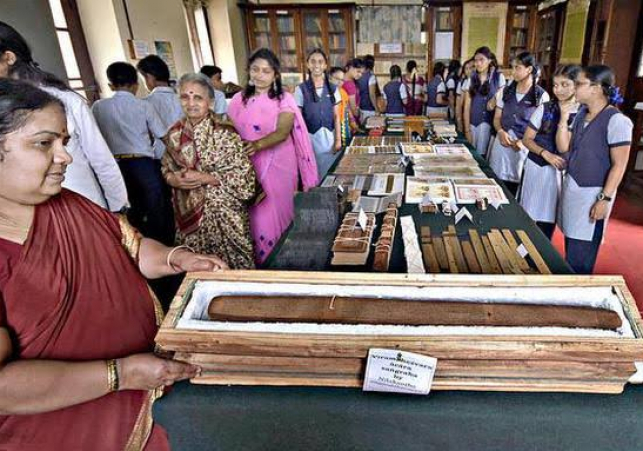

The Oriental Research Institute (ORI) in Mysuru's proposal to digitise manuscripts has gained traction, with the University of Mysore taking new steps in this direction.
On February 18, the university signed a Memorandum of Understanding with Bengaluru's Mythic Society. The result will be the digitization of manuscripts, which will preserve a slice of ancient and mediaeval India's intellectual history in the form of literary works and treatises on diverse themes.
The ORI houses over 70,000 manuscripts, as well as 41,000 rare printed and other texts. Scholar Rudrapatna Shamashastry discovered the single and complete volume of Kautilya's Arthashastra at ORI in 1905, and published it in 1909. Its existence had only been hinted at until then, thanks to references in other ancient texts. Arthashastra illuminates ancient India's governance and statecraft.
According to Prof. G. Hemantha Kumar, Vice Chancellor of the University of Mysore, the project will take two years to complete, while the digitalization process could take up to six years. He said that the project's duration could be extended based on its progress.
The ORI palm-leaf manuscripts will be cleaned, and a regular cleaning and preservation process will be established, according to the MoU, while a list of titles, including palm leaf manuscripts, hand-written works, and collections of printed works, will be made public.
All of the palm leaf works and books will be scanned and stored in a secure location, with the photos being used for crowdsourced text digitisation. With the help of manuscript readers, all essential palm leaf works will be identified and their unicode digitsation will be completed. Moreover, ORI will have its own website that will provide all information about the collection as well as share its content.
The need to digitise the writings originates from the need to preserve the information base for future generations, as the manuscripts are not only old but also brittle and delicate, turning to powder when opened. According to the MoU, the 17 volumes of published catalogues, as well as future and yet-to-be-published volumes, will be digitised for searchable choices.
A complete staffing and resource planning exercise will be conducted to cover the entire operation at ORI, from manuscript cleaning and treatment through catalogue digitising. The Mythic Society will engage skilled personnel for the job, according to the MoU. In addition, additional people would be hired or trained to perform various jobs at the ORI. The Mythic Society will pay all of the employees.
Also read : Arvind Kejriwal calls himself ‘world’s sweetest terrorist’